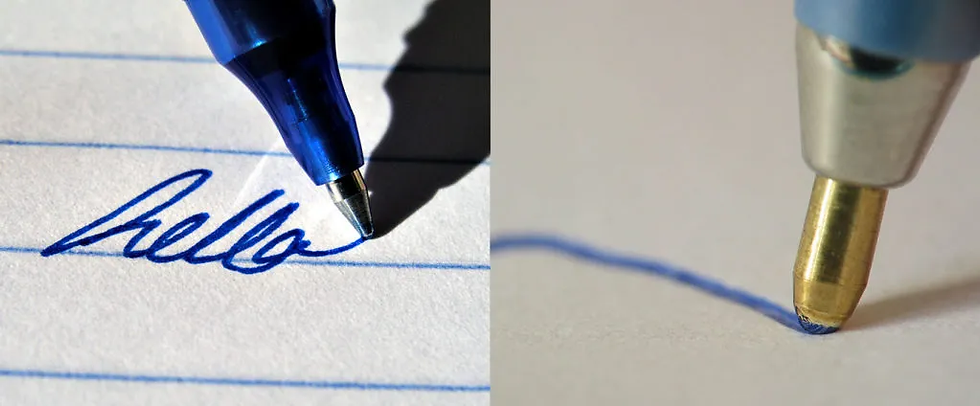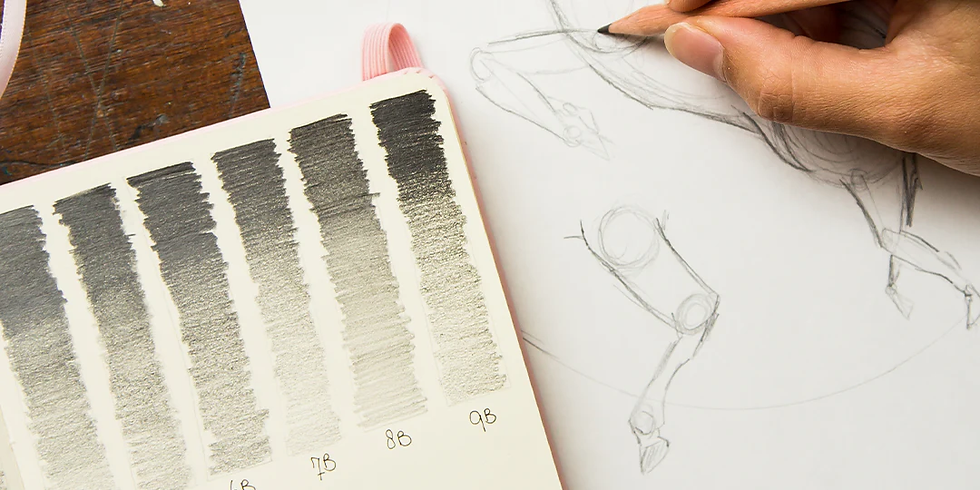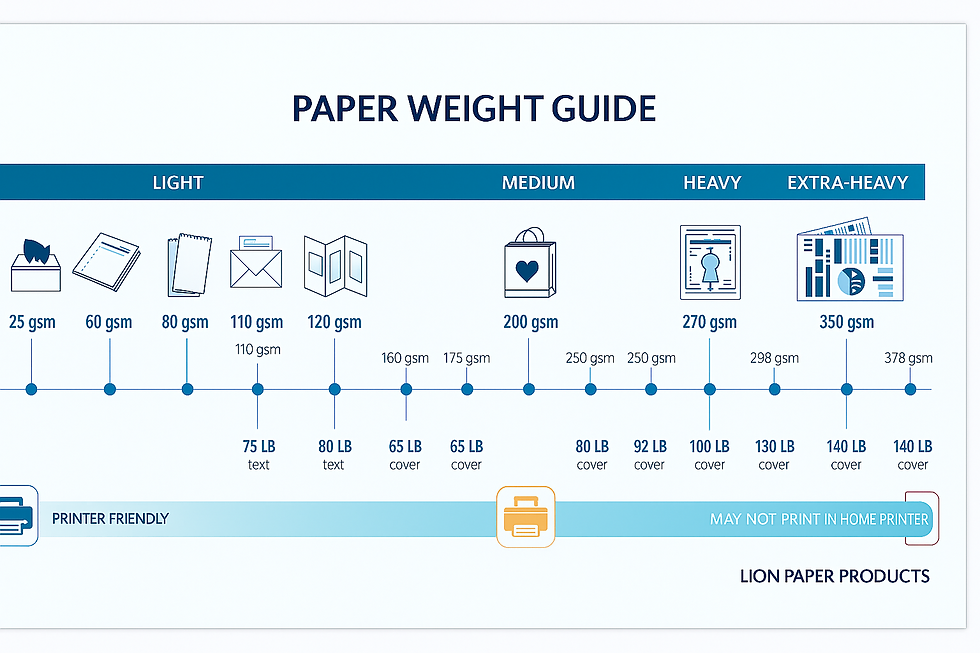How to Pick the Ideal Paper for Your Notebooks
- Leo Xia

- Jul 7
- 6 min read
Quick Content Reach:
How to Pick the Ideal Paper for Your Notebooks
Choosing the right paper for your notebook is an essential step in creating a pleasant and effective writing or drawing experience. Whether you're a student, artist, or professional, the paper type you select can significantly influence your productivity, creativity, and comfort. In this guide, we'll explore the key factors to consider when picking paper for your notebooks, including paper weight, finish, and the writing medium you plan to use. This comprehensive approach will help you select the best paper that suits your needs, ensuring a satisfying experience for both writing and sketching.
1. Consider Your Medium: Matching Paper to Writing Tools
When selecting notebook paper, the type of writing or drawing you'll be doing is the most crucial factor. Different tools require different types of paper for optimal results. Let’s explore the best paper options based on your preferred medium:
Pens (Ballpoint, Gel, and Rollerball)
For everyday note-taking and writing with pens, paper weight plays a critical role. A good range for pens is 80-100 gsm paper. This weight is light enough to ensure a smooth writing experience but thick enough to prevent ink from bleeding through.
Recommendation: For regular writing tasks with ballpoint or gel pens, choose 80-100 gsm uncoated paper. The uncoated surface allows for quick ink absorption, ensuring your writing remains clean and legible without excessive smudging.

Fountain Pens
Fountain pens, especially those with broader nibs, require a more durable paper to prevent issues like feathering and bleed-through. To achieve crisp lines and prevent ink from seeping into the paper, opt for heavier paper, around 120 gsm or higher.
Recommendation: Choose 120 gsm or heavier uncoated paper, which allows fountain pens to glide smoothly without spreading ink or creating unsightly feathering.

Source: Google Image.
Markers
Markers, similar to fountain pens, can cause excessive bleeding on lighter paper. To avoid this, it's best to use heavier paper. A minimum of 120 gsm will handle most markers well, preventing colors from bleeding onto the next page.
Recommendation: Select 120 gsm or thicker paper with a smooth texture to handle markers effectively, ensuring the colors pop without damaging the following pages.

Source: Google Image.
Watercolor or Wet Media
When working with watercolor paints or other wet media like ink washes, you need thick, absorbent paper. This is because wet media requires paper that can absorb water without warping or bleeding through.
Recommendation: For watercolor, go for 160 gsm or higher, ideally watercolor paper (330 gsm), which is designed to handle large amounts of water without compromising the paper’s integrity.

Source: Google Image.
Sketching and Drawing
For sketching, the paper weight you select will depend on the medium you use and how rough you sketch. Lighter papers, such as 70-90 gsm, are suitable for basic sketches with pencils or charcoal, while heavier paper (80-100 gsm) is better for more detailed work or if you use pens or ink.
Recommendation: Choose 80-100 gsm or heavier textured paper for sketching, depending on your drawing style and the materials you use.

2. Understanding Paper Weight (GSM)
GSM (grams per square meter) refers to the thickness and density of the paper. This is a crucial factor in determining the paper's ability to handle different writing and drawing instruments.
Lighter Paper (60-90 gsm): Ideal for general note-taking, especially with ballpoint pens or for printing purposes. This weight is flexible and typically used for notebooks with a lot of pages.
Heavier Paper (100 gsm and above): More durable and less prone to bleed-through, making it a great option for fountain pens, markers, or sketching. Heavier paper can handle demanding writing media and retains its structure even under pressure.
Extra-Heavy Paper (160 gsm and above): Best suited for wet media like watercolor or thick markers. This paper type is much sturdier and can handle heavy inks, water, or even some types of mixed media.

3. Consider Paper Finish and Coating
Another key factor in selecting paper is its finish. The finish refers to how smooth or textured the surface of the paper is, which can affect how ink interacts with it.
Smooth Finish
A smooth finish is ideal for ballpoint pens, gel pens, and fountain pens. The smooth surface ensures a clean writing experience with minimal drag.
Recommendation: Opt for smooth, uncoated paper for clean lines and quick drying, especially for fountain pens and ballpoints.
Textured Finish
Textured finishes are great for adding a tactile element to your work. They are often used for drawing or handwriting where texture is desired for visual and sensory appeal.
Recommendation: Choose textured paper for sketching or special writing techniques where the texture will enhance the overall experience.
Coated Paper
Coated paper has a shiny surface that reduces ink bleeding and feathering. However, it might delay drying time and cause smudging with some pens, especially fountain pens.
Recommendation: If your primary medium is markers or printing, coated paper can help prevent bleeding but may not be ideal for fountain pens.
Uncoated Paper
Uncoated paper has better ink absorption, which makes it a popular choice for fountain pens. It allows the ink to dry more quickly and prevents feathering, making it suitable for a wide range of writing styles.
Recommendation: Choose uncoated paper if you want optimal ink absorption, especially for fountain pens or pencil sketches.
4. Additional Considerations
When choosing the right notebook paper, other features should be considered:
Notebook Binding: If you want your notebook to lay flat for easier writing, consider a thread-bound or sewn-binding notebook.
Page Numbering and Indexing: For structured note-taking or academic purposes, notebooks with page numbers or an index may be beneficial.
Aesthetic Appeal: Paper color and notebook design can also play a role in your choice. Whether you prefer a classic white paper or a creamy beige finish, this can add a personal touch to your notebook.
Budget: While quality paper can be an investment, it's important to balance the cost with your needs. Consider the cost per page when choosing paper weight and quality.
Conclusion
Selecting the ideal paper for your notebook involves understanding your needs, the type of writing or drawing you’ll be doing, and the specific characteristics of paper like weight, finish, and coating. By carefully considering these factors, you can enhance your writing and creative process.
Explore our range of customizable notebooks and planners at Lion Paper Products. Whether you need high-quality paper for fountain pens, sketching, or watercolor, we offer solutions to meet all your creative needs. Contact us today for a quote and discover the best paper for your projects!
—Leo Xia, CEO, Lion Paper Products
FAQs:
Q1: What is the best paper weight for notebooks?
A: The ideal weight depends on your medium. For general writing, 80-100 gsm is good, while for fountain pens or wet media, 120 gsm or more is recommended.
Q2: Can I use watercolor on normal notebook paper?
A: No, normal paper may warp or tear. Use specialized watercolor paper (330 gsm) for the best results.
Q3: What is the difference between coated and uncoated paper?
A: Coated paper has a shiny finish, ideal for printing or markers, while uncoated paper absorbs ink better, making it great for fountain pens and sketches.
Q4: How do I know if paper is good for fountain pens?
A: Choose 120 gsm or heavier, uncoated paper for smooth writing and to prevent feathering.
Q5: What is the importance of paper GSM?
A: Higher GSM means thicker paper, which is better for absorbing ink and preventing bleed-through.
Q6: Should I choose smooth or textured paper?
A: For writing, smooth paper is ideal, while textured paper works best for drawing or unique writing styles.
Are you looking for a reliable manufacturer? Reach out to Lion Paper for a free quote and consultation. Let’s collaborate on creating custom writing paper products that will set your brand apart from the competition.






Comments